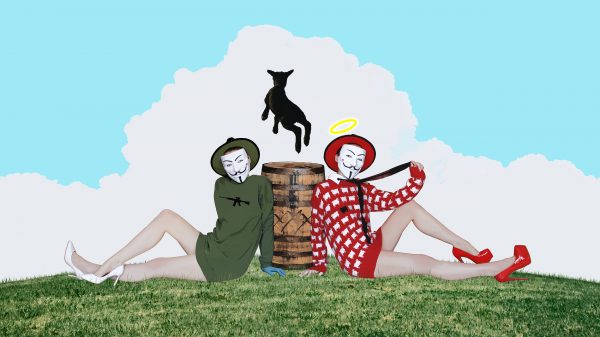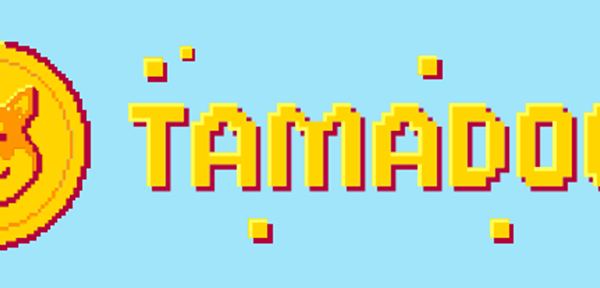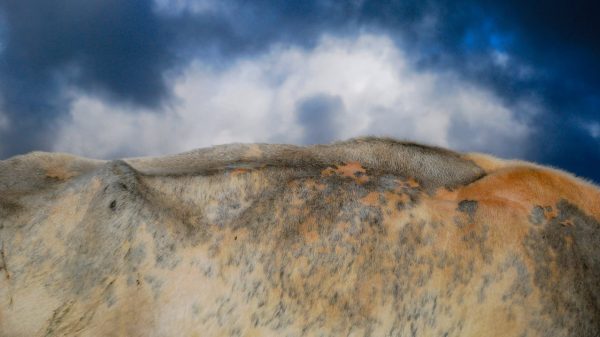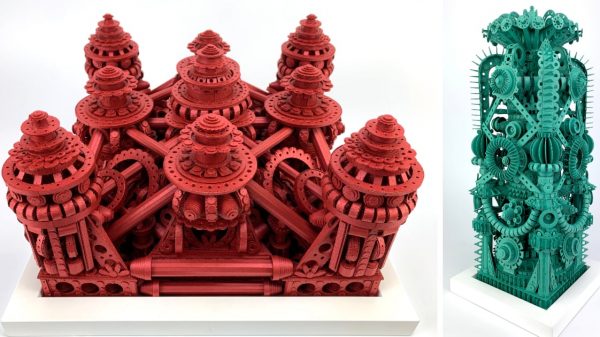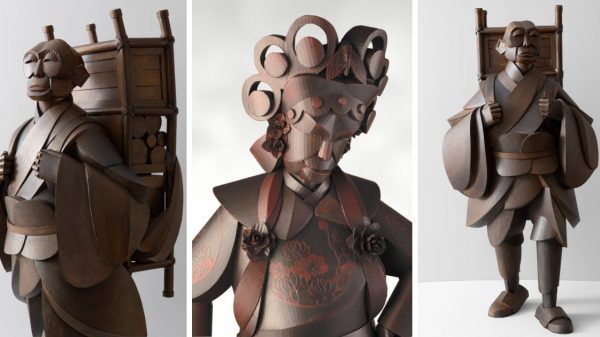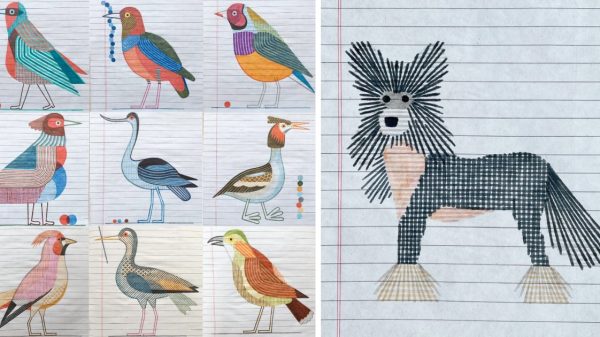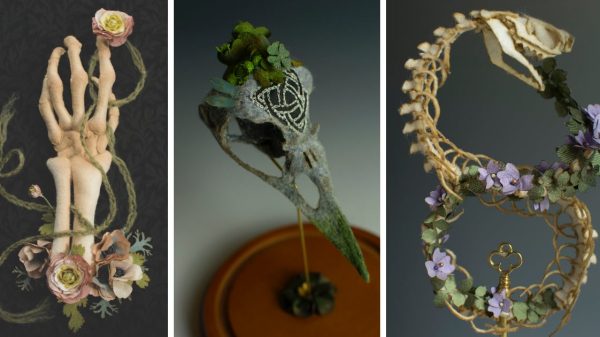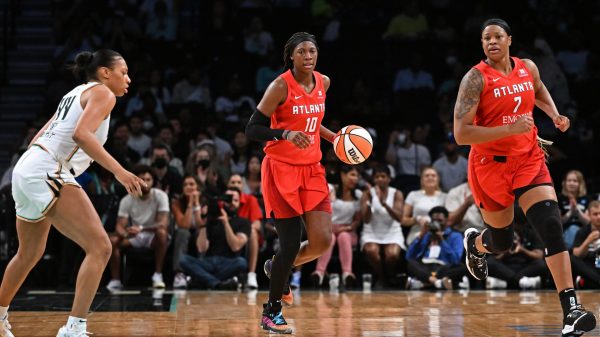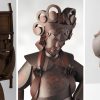Article from: Art News
Amy Stewart’s book The Earth Moved (2004).
AMY STEWART When I got this invitation, I found it funny that, of all the books I’ve ever written, this is the one an artist wants to talk about. I’ve written about cocktails and about poisonous plants, but it was after the earthworm book that I received many paintings and drawings. Somebody even made me a handmade board game about worms.
This surprised me because the publisher and I had such a hard time trying to figure out how to depict an earthworm for the cover of the book. It’s hard to make them look appealing, so the first cover had just text, and no one got it. The design changed with the next edition, but the publisher was still really averse to depicting an earthworm. And I get why. It’s tricky. I spent forever trying to photograph earthworms for my talks, eventually setting up an elaborate little photography studio for them. I had this aluminum trash can I turned upside down. If I got the surface a little damp, and if I really cleaned the earthworm off, then it would sit on the shiny surface and tolerate being there for a little bit. This allowed me to take photographs of the worm in a more typical pose—not desperately fleeing for its life.
People are often repulsed by these creatures—they live underground and you never see them, except on the sidewalk when it rains. And they don’t want to be removed from the earth; they’re part of it.
ALICE CHANNER I noticed too that your book about earthworms often circles around questions of scale. This is something I’m also really interested in as a sculptor. In 2021 I had a show called “Worms” at Quartz Studio, a rather tiny space in Turin—though I think tiny shows can be vast. I wanted to make a very nimble show—in part out of necessity, because the work had to fit in my suitcase. I found myself really interested in the ways that worms can expand and contract. I was also thinking about Brexit and worms—worms help make the ground what it is, and yet they do not recognize borders or nation states.
One work from 2020, Soft Sediment Deformation (Granite Bodies), has eight panels of fabric, which I just rolled up in my suitcase. It’s a kind of monumental sculpture [at thirteen feet high], but it can also be made small. I took a photograph of a piece of granite on the UK coastline, this horizontal geological formation called the Cracking Formation; the tide comes in and out across it every day. Then I printed that photograph on fabric and subjected it to an industrial pleating process. To me, this brings human scale and geological scale in dialogue with all the detail in the surface. Reading your book, I found myself really fascinated by the ways these tiny creatures can have such massive consequences. I’m also trying to weave between these different kinds of scale, and I see the pleated skin of the sculpture as similar to the skin of a worm. I know that’s asking people to make huge leaps with their imagination, and that’s fine; I’m comfortable with that.
View of Alice Channer’s exhibition “Worms,” 2021–22, at Quartz Studio, Turin.
STEWART When I think of an earthworm’s physicality, especially that it can be sliced and then regrow half its body, it almost makes me wonder if they’re more important than we are, since they have this incredible advantage! Tell me about the other works.
CHANNER Urn (Second Rebirth) [2020-ongoing], was displayed on the floor. I sent two brambles in the post to a Turin sand-casting foundry. Sand-casting is used to make many things, like manhole covers. The process is very primitive but also very sophisticated at the same time. The molds are shaped in sand, and metal is poured into the void. On the floor, you see a sand mold that’s been opened, the aluminum still intact. I’ve been making work with and about brambles since 2015. I’m obsessed with how they’re soft and fragile yet also spiny, aggressive, and strong, and they grow in the kinds of compromised industrial areas where I live and work. Aluminum is also a really important metal in my work—I’m drawn to its lightness, its strangeness. I put the mold on the floor in the gallery, and that was the sculpture. So you’re seeing an industrial process, but one that very much happens in the ground and often in secret, not unlike the work of worms.
The third sculpture in the show is called Worms [2021]. The form comes from the same sand-casting process. Worms are embedded in the soil—they help make soil and are of soil. I was interested in the kind of authorship they suggest, because I’m also embedded in materials and forms that I can’t separate myself from. I think of this work as a figurative sculpture, with spiral glands resembling chubby worms.
STEWART Right, worms have these little bristles that allow them to grab onto the soil so they become difficult to pull out. We’ve all seen a robin working hard to tug a worm out of the ground—this requires a lot more force than you might expect for a small, weak, slimy creature. And earthworms are literally living in and among the results of what they make. They are helping make the soil, in the sense that they’re taking particles of clay, sand, and decaying organic matter, as well as bacteria and fungi, then digesting them and incorporating them into the soil.
They also have this massive advantage, when hiding from predators, because it’s so difficult to see them underground. This is a real problem for earthworm scientists—they can use mechanical means like electric pulses or vibrations or mustard gas to force earthworms to the surface. But otherwise, you just have to dig and hope that you find what you’re looking for. So many earthworm species remain unnamed, and others have barely been seen.
CHANNER That’s one of the reasons why your book is so important—it helps us imagine this place under our feet, which you’re right, is usually invisible. Maybe this is why some of those billionaires who launched themselves into outer space during the pandemic find it easier to colonize the air above our heads than to engage with the ground beneath our feet. We tend to think of the ground as just a surface, but in fact it’s extremely complex. I’m certainly interested in how we imagine the skin of the earth—even though my work is sculpture, it’s all very much about skins and surfaces.
STEWART That brings us back to the issue of scale. Earthworms drive so much of what happens aboveground—they can literally change an ecosystem. They can destroy different bacteria in the soil or cause others to proliferate, and then different plants grow, and then the whole environment changes. And in their world, they’re the enormous ones. We see them as tiny and helpless, but they are powerful.
CHANNER How do you feel about a political reading of that fact? I think one was implied in your book, and I’m trying to make a similar point regarding scale in sculpture. But we both stop short of making those stances explicit.
STEWART We literally use the term “grassroots” to refer to individuals coming together and organizing. Worms are a great example of the power of collective action. For example, when non-native worm species were introduced to rice terraces in the Philippines, they filled the soil with holes and the terraces drained. Now you can’t grow rice there anymore. Earthworms inadvertently transformed an entire way of life that had been practiced for centuries. That’s not a level of power that most people expect from a little spineless, blind, deaf creature.
I think a lot about Darwin’s book about earthworms, which was published in 1881. That was the first time anyone had seriously asked, what are earthworms capable of? Can they hear? He played the piano for them to find out if they respond to sound. He gave them mint leaves to see if they could smell. And there’s so much original earthworm science still to be done. I often say in talks, if anybody’s looking to make a career change, the field of earthworm science is wide open. You can make new discoveries and even name a species after yourself!
CHANNER In the field of contemporary art, there’s a bit of an obsession at the moment with “research-based practice,” but I definitely don’t think my work falls into that category. My work is much more sensory, and it has a lot to do with embedding myself in materials and processes. That’s how I became interested in worms, as processing bodies. Similarly, you end your book talking about a sewage processing plant where worms play a role in cleaning waste water. There’s a part where you say, “I have come to understand, like Darwin had, that earthworms are not destroyers, but redeemers. They move through waste and decay in their contemplative way, sifting, turning it into something else, something that is better.” That’s how I want to work as an artist. I might not always get there, but I think when artists are at their best, that’s what we do. We’re sifting through all of this waste and decay.
Certainly, if you’re making sculptures, all the materials available to you are compromised, if not waste. I’m taking that on and saying OK, I want to sift through this stuff and turn it into something else, hopefully something better, even when I’m expressing emotions that are difficult or painful. When I read that quote, I thought, this is a description of artistic authorship, and it made me feel hopeful about what artists can do at this moment in time.
STEWART Earthworms are the ultimate recyclers. I’m so glad I got to speak with Mary Appelhof for the book before she died. She was a biologist who realized that earthworms can devour much of our waste stream, not just human waste, but some industrial waste as well. At first, she imagined one giant factory where earthworms would process it all. Then, she realized she was thinking about it all wrong: this happens at the individual level, in the backyard. She changed her sense of scale. Now her model involves not one giant place, but a bunch of people each doing a small thing.
A cell phone powered by a microbial fuel cell in the lab.
CHANNER This brings us back to scale as a political question, which I was thinking about with my first public sculpture, Nanowires [2021]. It’s installed in the engineering department at the University of the West of England, in Bristol. The best way to view it is to lie down and look up—I was thinking about worms, and about how if sculpture is hard, solid, and vertical, it’s generally going to be seen as valuable and as an achievement. But if it’s soft or small, or if the form meshes with its surroundings, that’s a different story.
The form of Nanowires was inspired by the bodies of bacteria. I asked the department to put me in touch with engineering researchers working with biological forms, and I got to meet Ioannis [“Yannis”] Ieropoulos. His lab produced a urine-powered mobile phone charger. The bacteria in the urine can respire anaerobically, without oxygen. When they do that, they generate electricity through conductive, bacterial nanowires that occur naturally on their microscopic bodies. The sculpture is based on those nanowires, and
on imagining their use in industrial processes in a playful way.
Microorganisms growing on carbon fibers from
one of Yannis Ieropoulos’s experiments.
Ioannis told me that one of the biggest challenges his research presents to society is that, if everybody had a device in their house that filled up with their waste to generate electricity, there’d be no need for power plants. It’s possible that one day, we could have devices in our homes that collect all our waste and generate electricity, and this could have massive implications for the way that society is structured. This decentralization could lead to the end of capitalism, and I say, bring it on. But in order for that to happen, we all have to be willing to change, and to think about scale differently. As artists and writers, our part of this collective effort is helping people imagine how we could structure things differently, on a more humane scale.
—Moderated by Emily Watlington
source
Article from: Art News


